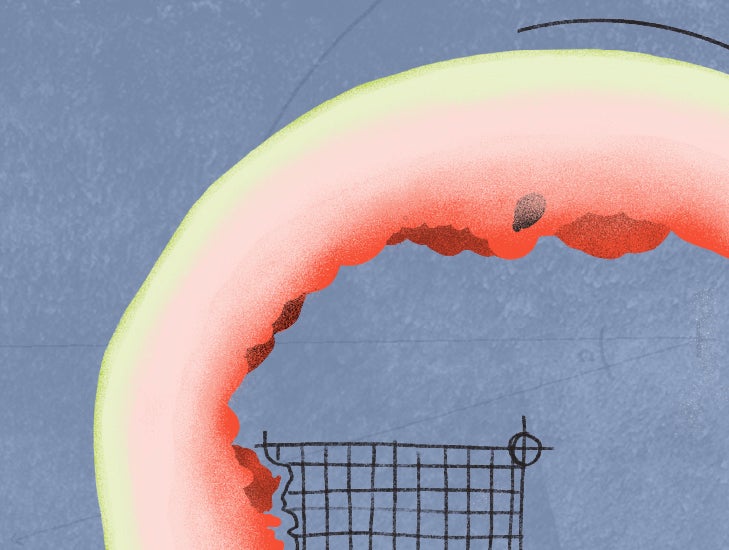Table of Contents
Globally,
Publicity to some environmental ailments, these types of as heat, causes plastic to break into scaled-down fragments named microplastics, which can migrate into food stuff.
One-use drinking water bottles, to-go containers, meals cans, and storage wraps are illustrations of common plastic-centered food stuff packaging that incorporates microplastics.
Heating foodstuff in plastic packaging, prolonged storage instances, and the variety of plastic packaging a particular person works by using all
The microplastic chemicals present in food items are a
Some prevalent microplastics existing in meals consist of:
- bisphenol A (BPA): Producers
use this plasticizer to make polyvinyl chloride, the “parent” plastic of a lot of merchandise. - dioxin: This is a
byproduct of herbicides and paper bleaching, which contaminate the natural environment. phthalates : These make plastics much more adaptable, transparent, and long lasting and are existing in several kinds of food packaging.- polyethylene and polypropylene: These make packaging lightweight and tough and are the
most widespread plastics current in foodstuff and the ecosystem.
Microplastics discovered in scaled-down quantities in food items include BPA and BPF, mono-(3-carboxypropyl), mono-(carboxyisononyl), and mono-(carboxyisoctyl).
Microplastics are the fragments of stabilizers, lubricants, fillers, plasticizers, and other substances that brands use to give plastics their desirable
Even so, gurus have categorized a lot of of these chemical substances as harmful and hazardous to human health and fitness.
Beneath, we go over some of the hazards of microplastics in better depth.
Disrupting hormones
Scientists think about at least
Endocrine disruptors are
In particular, analysis has proven that publicity to BPA performs a position in
BPA competes with estrogen and testosterone for their receptors, reducing the volume of these hormones readily available for reproductive well being.
Rising hazard of persistent condition
Investigation proceeds to display that lengthy-phrase publicity to endocrine-disrupting microplastics will increase the threat of developing
Professionals associate bigger blood stages of dioxins, phthalates, and BPs with pre-disorder states of
Some
Impairing immune health and fitness
A
The intestine performs an
Persistent publicity to microplastics in the intestine is
Additionally, the area of microplastics may well harbor dangerous germs that more compromise immune overall health.
Microplastics are
Investigate indicates that an regular human being in the United States could take in around
This figure boosts to an believed 90,000 in those who regularly take in plastic-centered bottled h2o, and to 120,000 when thinking of the inhalation of microplastics from non-foodstuff resources.
The authors of a
These conclusions advise that the volume of microplastics that folks occur into speak to with and consume is substantially increased than professionals when predicted.
While removing your exposure to microplastics might not be attainable, you can check out to minimize the total of microplastics you arrive into call with and take in.
Below are some recommendations:
1. Limit remarkably processed food items
Analysis associates use of hugely processed foodstuff — these types of as hamburgers, ready-to-try to eat usefulness meals, French fries, ice cream, soda, and canned foodstuff — with greater ranges of phthalate microplastics in the entire body. This influence is additional pronounced in young children.
Specialists further speculate that the low nutritional quality of highly processed foods, merged with the dangerous results of the microplastics current in people foodstuff, may perhaps be liable for the development of continual situations, such as coronary heart illness.
The alternative: Pick out whole food items and minimally processed food items a lot more usually and limit or eradicate extremely processed foods from your diet plan. This will aid reduce ranges of endocrine-disrupting microplastics in the human body.
2. Pick out eco-pleasant packaging
Employing eco-helpful packaging
The alternative: Decide for the subsequent:
- glass storage containers, moveable bowls, and drinking water bottles
- stainless steel bento packing containers and reusable water containers
- bamboo lunch boxes, bowls, utensils, and pantry storage jars
- rice husk bowls and storage containers
3. Use glass or stainless steel drinking water bottles
Publicity to microplastics is nearly
This may possibly be owing to the point that warmth and extended storage occasions that may perhaps be common with bottled water
The alternative: Change single-use or BPA-containing drinking water bottles with glass or stainless steel kinds to cut down exposure to microplastics.
Microplastics are the fragments of stabilizers, lubricants, fillers, plasticizers, and other chemical compounds manufacturers use to give plastics their desirable qualities, these kinds of as transparency, toughness, and flexibility.
Microplastics migrate into the foodstuff offer and bring about wellness challenges, such as amplified irritation, impaired fasting glucose, insulin resistance, variety 2 diabetic issues, and heart sickness.
Exposure to microplastics by way of foodstuff is large, but you can reduce it by restricting your usage of very processed foodstuff, deciding on eco-helpful foods packaging, and replacing plastic water bottles with glass or stainless steel ones.




